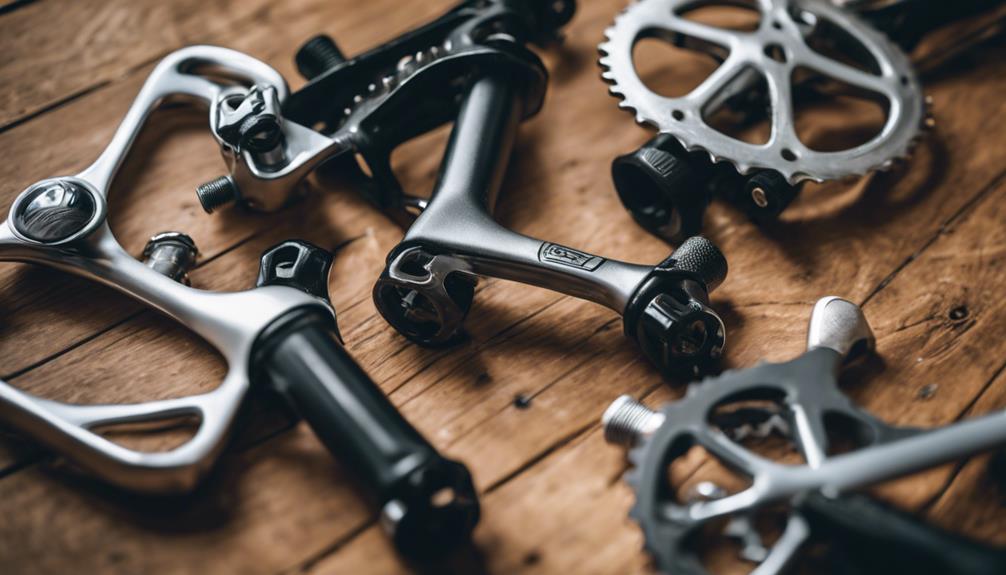Fixed gear bikes, often referred to as “fixies,” have surged in popularity over the last two decades. Originally a staple for track cyclists and messengers in urban areas, these minimalist bicycles have evolved into a cultural phenomenon. This article explores the history, benefits, and challenges of fixed gear bikes, providing valuable insights for potential riders and enthusiasts alike.
Understanding Fixed Gear Bikes
A fixed gear bike is a bicycle that has a drivetrain with no freewheel mechanism. This means that the pedals are directly connected to the rear wheel, allowing the rider to control their speed and braking by pedaling backward or forward. The simplicity of the design is one of the key attractions of fixed gear bikes.
Components of a Fixed Gear Bike
Fixed gear bikes typically consist of the following components:
- Frame: Usually lightweight and designed for durability, often made from materials like aluminum or carbon fiber.
- Wheels: Generally feature a single gear ratio, which can be adjusted for different riding conditions.
- Handlebars: Can vary from flat to drop bars, depending on the rider’s preference.
- Brakes: Many fixed gear bikes are designed without brakes, relying on the rider’s ability to slow down by resisting pedal motion.
The Historical Context of Fixed Gear Bikes
The fixed gear bike’s roots can be traced back to the late 19th century when bicycles were first becoming popular. Initially used for racing, fixed gear bikes gained traction in urban areas during the late 20th century, particularly in New York City, where bike messengers embraced their efficiency and maneuverability.
The Urban Cycling Movement
As cities became more congested, the need for quick and efficient transportation led to a resurgence of interest in cycling. Fixed gear bikes offered several advantages:
- Simplicity: Fewer components mean less maintenance and lower repair costs.
- Weight: The absence of derailleurs and shifters makes fixed gear bikes lighter than traditional multi-gear bicycles.
- Cultural Appeal: The fixie scene became intertwined with urban art and fashion, attracting a diverse community of riders.
The Benefits of Riding a Fixed Gear Bike
Riding a fixed gear bike offers numerous advantages that appeal to both casual cyclists and serious riders.
1. Improved Cycling Skills
Fixed gear bikes require riders to develop a stronger understanding of their bike’s mechanics. Since you cannot coast, you learn to maintain momentum and control speed.
2. Enhanced Physical Fitness
The constant pedaling engaged with a fixed gear bike can lead to better cardiovascular health and muscle toning. Studies have shown that cycling regularly improves overall fitness levels:
- Increased endurance
- Improved leg strength
- Enhanced balance and coordination
3. Cost-Effectiveness
Fixed gear bikes are often more affordable than their geared counterparts. The reduced complexity means fewer parts to replace and maintain.
4. Eco-Friendly Transportation
As cities look for sustainable transportation options, fixed gear bikes stand out as an environmentally friendly choice. They produce no emissions and can significantly reduce traffic congestion.
Challenges of Fixed Gear Bikes
While fixed gear bikes have many benefits, they also come with some challenges that potential riders should consider.
1. Limited Gearing Options
One of the primary drawbacks of fixed gear bikes is their lack of gearing options. This limitation can make riding in hilly areas particularly challenging.
2. Safety Concerns
Riding a fixie without brakes can pose safety risks, especially in busy urban environments. Riders must be highly skilled at controlling their speed and stopping.
3. Learning Curve
For those new to cycling or coming from a geared bike, adjusting to a fixed gear bike may require time and practice. The inability to coast can be intimidating for some cyclists.
Case Studies: Fixed Gear Communities
The growth of fixed gear bike culture has led to the formation of vibrant communities around the world. Two notable examples include:
1. The New York City Cycling Scene
New York City became a hotspot for fixed gear culture in the early 2000s. The city’s bike messengers popularized fixies for their agility in traffic. Events like the Red Hook Crit, a series of fixed gear crit races, have drawn international attention and participation.
2. The Tokyo Fixed Gear Movement
Tokyo has also embraced the fixed gear bike culture, with a thriving community of riders and shops specializing in custom builds. The annual Tokyo Fixed Gear Championship showcases the talents of local riders and promotes the sport.
How to Choose the Right Fixed Gear Bike
If you’re considering purchasing a fixed gear bike, here are some tips to help you make the right decision:
- Determine Your Riding Style: Consider whether you will be using the bike for commuting, racing, or leisurely rides.
- Test Ride: Always test ride a bike before purchasing to assess comfort and fit.
- Quality Over Price: Invest in a reputable brand to ensure durability and performance.
- Customization: Many riders enjoy customizing their bikes, so look for options that allow for personalization.
Conclusion
The fixed gear bike has transcended its origins as a practical mode of transportation to become a symbol of urban culture and cycling passion. While they offer numerous benefits such as improved cycling skills, cost-effectiveness, and environmental friendliness, they also come with challenges that riders must navigate. By understanding both the advantages and potential drawbacks, you can make an informed decision about whether a fixed gear bike is the right choice for you.
As cities continue to evolve and embrace cycling as a sustainable mode of transport, the allure of fixed gear bikes is likely to persist. Whether you are a seasoned cyclist or just starting your biking journey, the world of fixed gear riding offers excitement, community, and a unique experience on two wheels.
